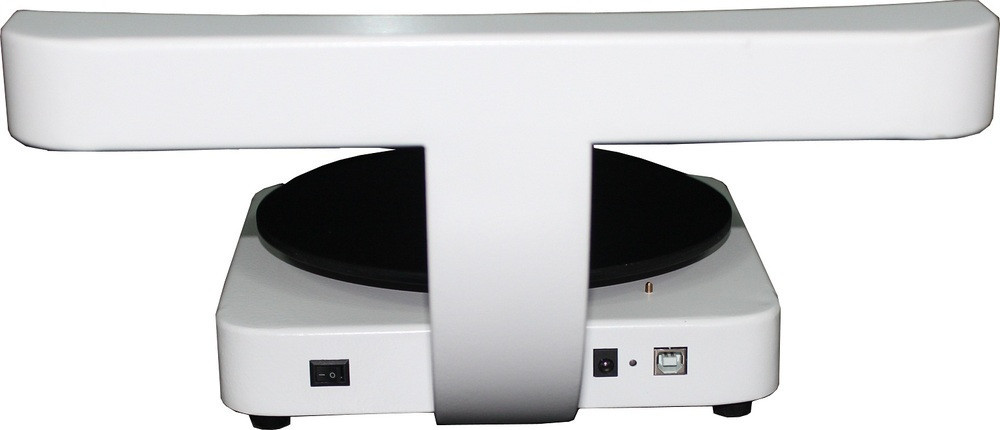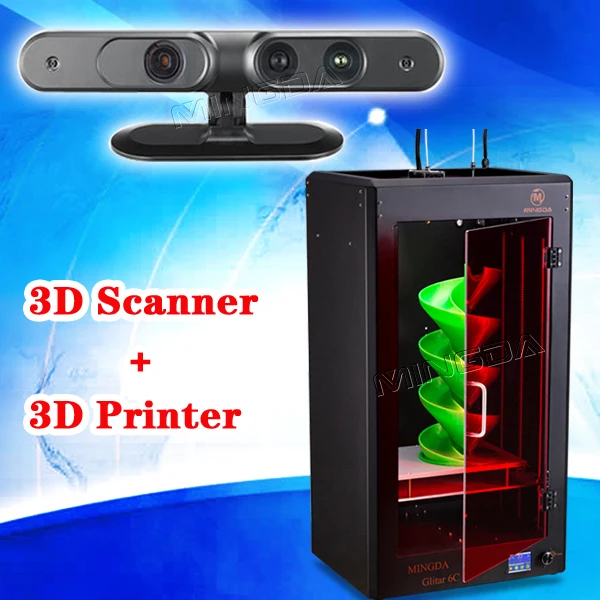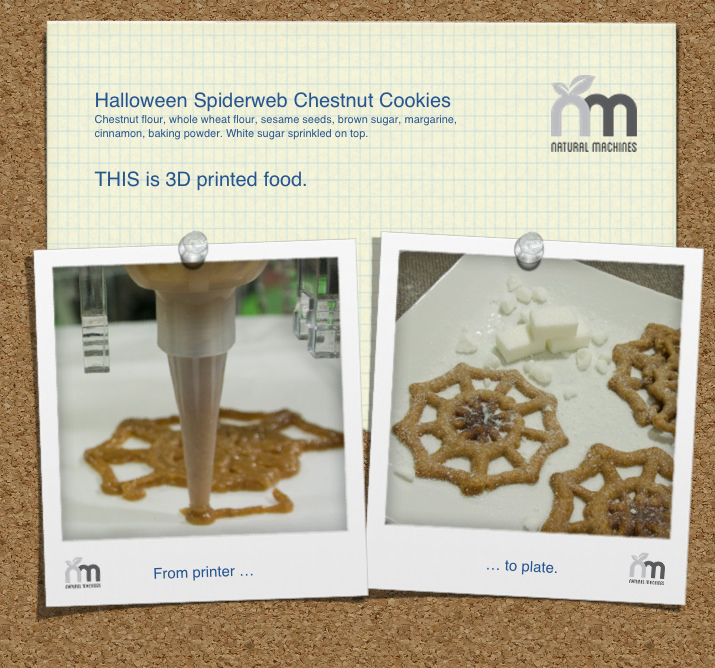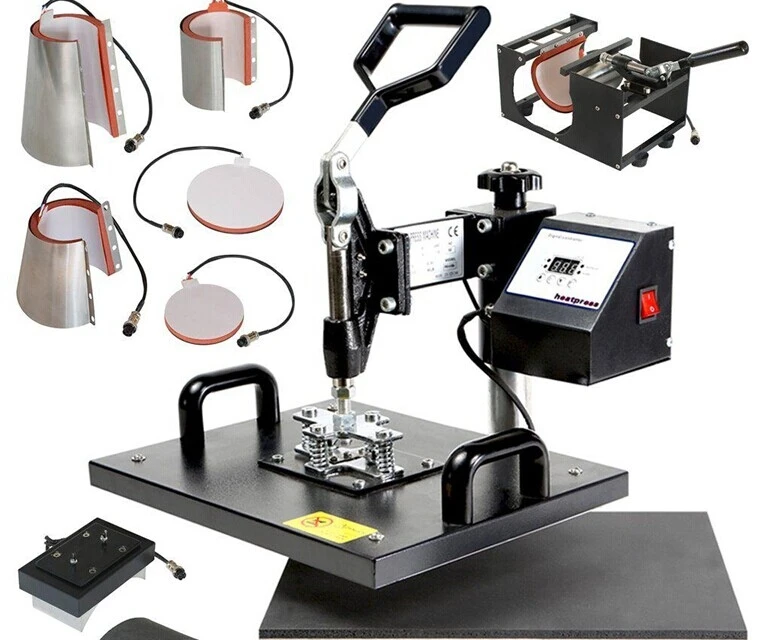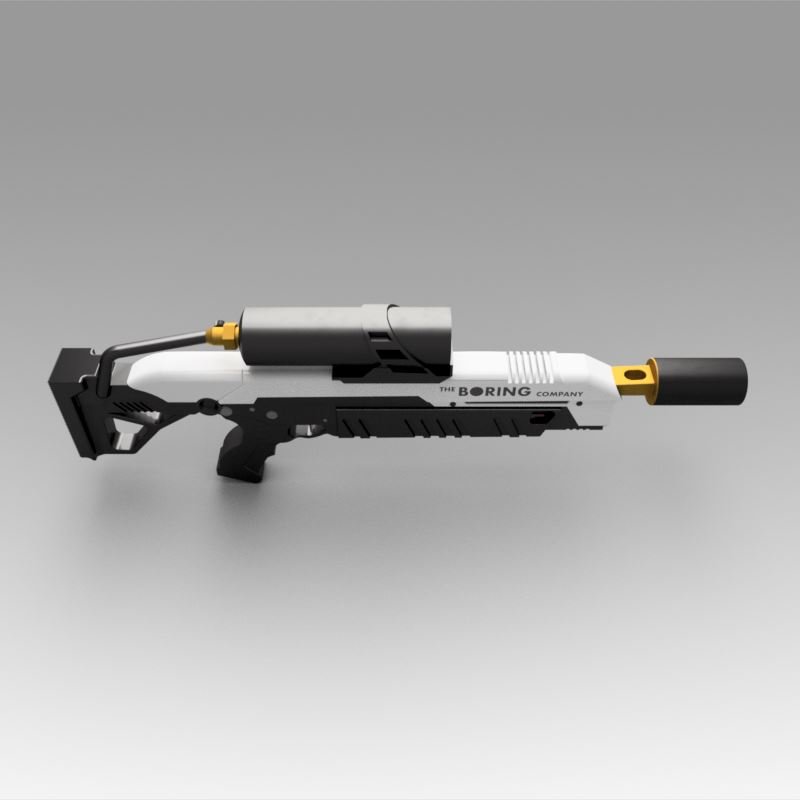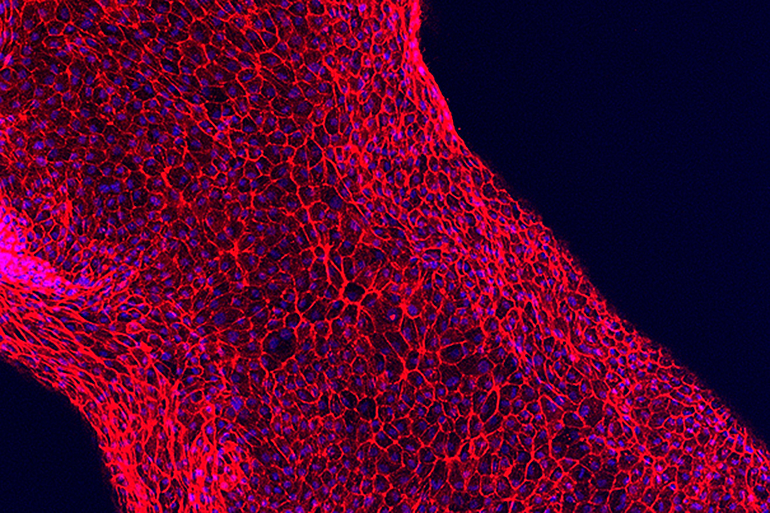3D laser scanner price list
Best 3D scanner 2022 - Expert selections for every need
What is the best 3D scanner?
Many different types of 3D scanners exist, from desktop 3D scanners to handheld 3D scanners and advanced metrology systems. 3D scanners serve an extremely wide range of applications, from reverse engineering to 3D body scanning or even forensic investigations.
However, given the low number of reliable 3D scanner reviews, it can be challenging to find the best 3D scanner. It can also be complex to know what kind of 3D scanner to get based on your application. A $2,000 3D scanner won’t be sufficient for part inspection, and a $60,000 3D scanner would be overkill if you don’t need the precision.
With that in mind, our goal is to offer an overview of the best 3D scanners in different categories. We broke down our best 3D scanner picks into actionable selections:
- Professional: A mix of the best desktop and handheld options for professionals
- Affordable: Entry-level 3D scanners for makers with prices starting at around $400
- Metrology: High-precision 3D scanners for demanding use cases
- Handheld: Portative devices that can access hard-to-reach places
- SLAM and iMMS: Mobile laser 3D scanners for BIM and other large-scale applications
- TLS: Terrestrial LiDAR scanners
- Dental (desktop): Stationary 3D scanners for the dental labs
- Jewelry: Closed, high-precision 3D scanners for jewelers
- 3D body scanners: Booths and handheld color 3D scanners
Note that there can be some overlap between categories. For example, some handheld 3D scanners are precise enough for metrology or can capture colors and work for 3D body scanning.
Tip: Use the table of contents to the top left of your screen to easily navigate between our selections.
We also run through different 3D scanning applications (reverse engineering, 3D inspection, architecture, etc.) and provide concise explanations of the various 3D scanning technologies that exist.
Professional 3D scanner selection
This category groups some of the best professional 3D scanners. Our selection spans a wide price spectrum and includes both desktop scanners and handheld 3D scanners. These 3D scanners can cover most professional use cases.
| Brand | Product | Accuracy | Country | Price Approximate starting prices based on supplier-provided information and public data. Prices may vary by region, over time and do not include additional products or services (taxes, shipping, accessories, training, installation, …). | |
|---|---|---|---|---|---|
| SCANTECH (HANGZHOU) CO., LTD This brand is a certified partner from our network. | iReal 2E | 0.1 mm0.003937 in | China | $ 3,9803 980 €3,530 £593,243 ¥ | Quote |
| Shining 3D This brand is a certified partner from our network. | EinScan H | 0.1 mm0.003937 in | China | $ 4,9994 999 €4,434 £745,131 ¥ | Quote |
| Shining 3D This brand is a certified partner from our network. | EinScan HX This product has been reviewed by our team. | 0.04 mm0.001575 in | China | $ 12,00012 000 €10,644 £1,788,672 ¥ | Quote |
| Medit | Solutionix C500 | 0.01 mm0.000394 in | South Korea | $ 40,00036 500 €35,482 £5,962,240 ¥ | Quote |
| Creaform This brand is a certified partner from our network. | HandySCAN BLACK Elite This product has been reviewed by our team. | 0.025 mm0.000984 in | Canada | $ 65,00057 000 €57,658 £9,688,640 ¥ | Quote |
| GOM | ATOS Q This product has been reviewed by our team. | – | Germany | upon request | Quote |
| GOM | GOM Scan 1 This product has been reviewed by our team. | – | Germany | upon request | Quote |
| SCANTECH (HANGZHOU) CO., LTD This brand is a certified partner from our network. | SIMSCAN This product has been reviewed by our team. | 0.02 mm0.000787 in | China | upon request | Quote |
Expand to see more specs
The products in the table are ranked by price (low to high).
| Brand | Product | Technology | Category | Country | Price Approximate starting prices based on supplier-provided information and public data. | |
|---|---|---|---|---|---|---|
| SCANTECH (HANGZHOU) CO., LTD This brand is a certified partner from our network. | iReal 2E | Structured light | Mobile > Handheld | China | $ 3,9803 980 €3,530 £593,243 ¥ | Get a quote |
| Shining 3D This brand is a certified partner from our network. | EinScan H | Hybrid | Mobile > Handheld | China | $ 4,9994 999 €4,434 £745,131 ¥ | Get a quote |
| Shining 3D This brand is a certified partner from our network. | EinScan HX This product has been reviewed by our team. | Structured light | Mobile > Handheld | China | $ 12,00012 000 €10,644 £1,788,672 ¥ | Get a quote |
| Medit | Solutionix C500 | Structured light | Stationary > Desktop | South Korea | $ 40,00036 500 €35,482 £5,962,240 ¥ | Get a quote |
| Creaform This brand is a certified partner from our network. | HandySCAN BLACK Elite This product has been reviewed by our team. | Laser triangulation | Mobile > Handheld | Canada | $ 65,00057 000 €57,658 £9,688,640 ¥ | Get a quote |
| GOM | ATOS Q This product has been reviewed by our team. | Structured light | Stationary > Industrial | Germany | upon request | Get a quote |
| GOM | GOM Scan 1 This product has been reviewed by our team. | Structured light | Stationary > Desktop | Germany | upon request | Get a quote |
| SCANTECH (HANGZHOU) CO., LTD This brand is a certified partner from our network. | SIMSCAN This product has been reviewed by our team. | Laser triangulation | Mobile > Handheld | China | upon request | Get a quote |
Overview of the best professional 3D scanners
The iReal 2E is another versatile 3D scanning option in the entry-level price range.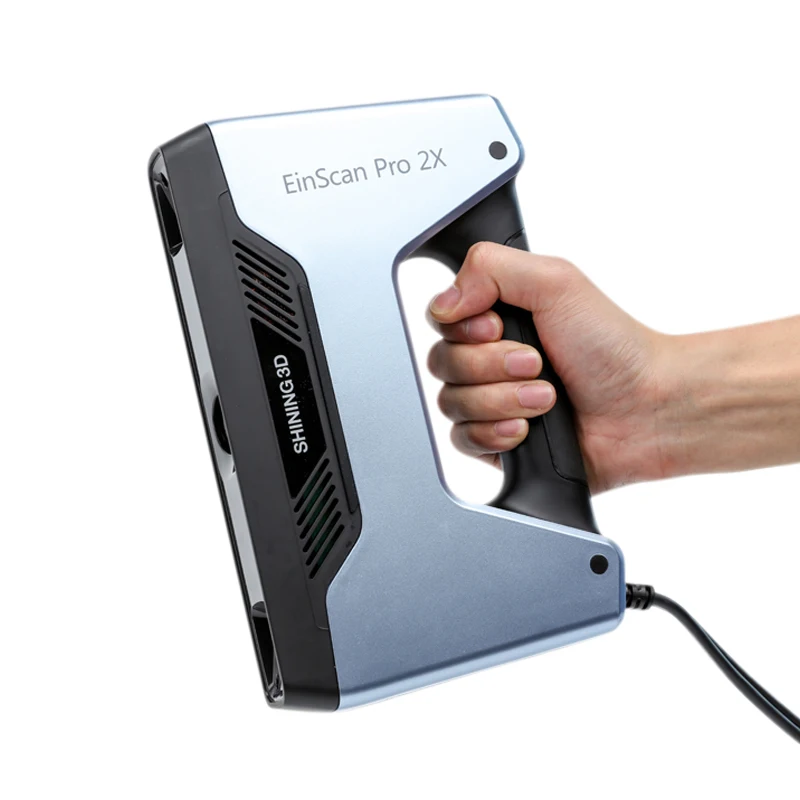 It uses VCEL structured light to capture medium- to large-sized objects. Like infrared light, VCEL light is invisible to the human eye and is therefore also particularly adapted to face and body 3D scanning.
It uses VCEL structured light to capture medium- to large-sized objects. Like infrared light, VCEL light is invisible to the human eye and is therefore also particularly adapted to face and body 3D scanning.
Scantech has reported diverse use cases for the iReal 2E 3D scanner, namely in forensic investigations, healthcare, and even culture preservation. In the latter, Scantech’s customer 3D scanned a woman performing different Tai Chi movements– an interesting and uncommon application!
Contact manufacturer Get a quote Add to comparison
The EinScan H was launched alongside the EinScan HX in September 2020. It uses a combination of structured LED light and infrared light, with a built-in color camera for texture acquisition.
This 3D scanner can therefore serve a range of applications involving color capture, with uses in retail, art preservation, healthcare, and more. Furthermore, its infrared light is eye-safe and won’t blind users during a face or body scan.
Shining 3D’s versatile EinScan H is a great entry-level deal for most basic use cases, and its software is getting more intuitive by the update.
Contact manufacturer Get a quote Add to comparison
The EinScan HX features hybrid technology: it has both structured LED light and laser triangulation capabilities, an industry-first from Shining 3D. Each technology is accessible through a specific mode that the user chooses at the beginning of a 3D scanning process.
After reviewing the HX, we found that it is a powerful and versatile product, capable of 3D scanning parts of various properties (sizes, colors, textures). It has a nice and sturdy finish and is easy to manipulate. In addition, the little weight it has is very well distributed to offer an ergonomic balance.
In this price range and at this level of performance, the EinScan HX is unrivaled.
Read the full review: Shining 3D EinScan HX review
Contact manufacturer Get a quote Add to comparison
The SIMSCAN is extremely lightweight for a handheld 3D scanner, weighing only 570 grams. It’s also very compact– the absolute smallest in its class– with dimensions of 203 x 80 x 44 millimeters.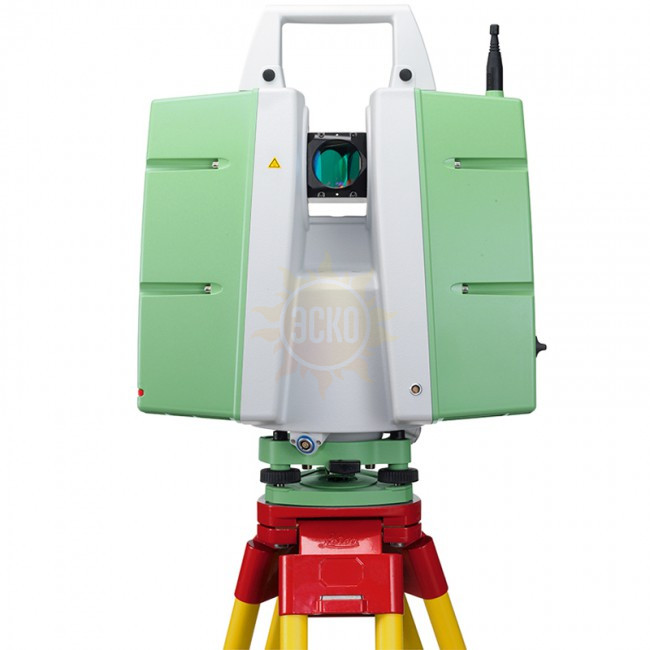 Scantech earned a Red Dot Design Award in 2021 for the SIMSCAN’s disruptive design.
Scantech earned a Red Dot Design Award in 2021 for the SIMSCAN’s disruptive design.
After using the SIMSCAN to 3D scan various types of parts, we can confirm it’s an excellent product that feels, looks, and works great. With a price of around €25,000, the SIMSCAN’s price-to-performance is outstanding. The only blemish lies in the software, but it receives updates regularly and you can export your scans to your preferred suite.
Read the full review: Scantech SIMSCAN review
Contact manufacturer Get a quote Add to comparison
The BLACK Elite tops out Creaform’s flagship HandySCAN range, which we have reviewed several times over the years. It delivers a powerful performance that reminds us of the Metrascan 750, but without all the hurdles (complex setup, number of parts and accessories, and large footprint).
Creaform’s HandySCAN BLACK Elite boasts a clean, robust finish. Everything exudes quality and rigor, the attention to detail is similar to the feeling that Apple products give off.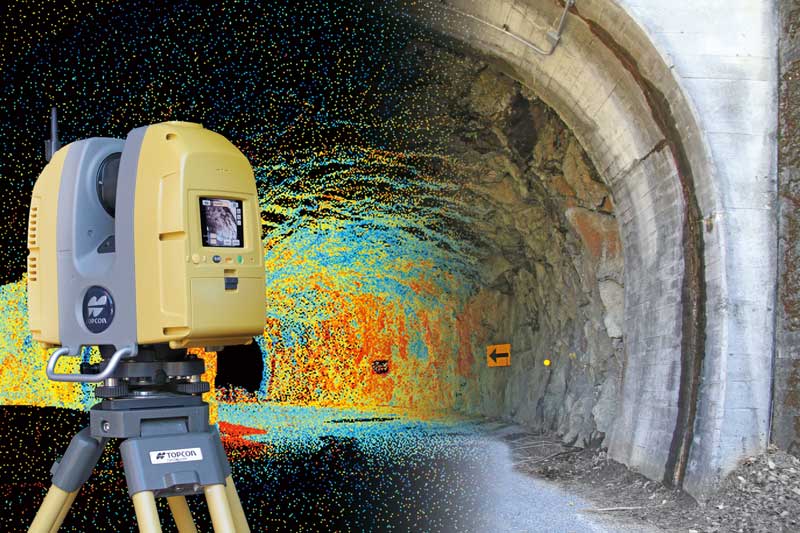 It’s no wonder this scanner received a Red Dot Design Award (2019).
It’s no wonder this scanner received a Red Dot Design Award (2019).
Read the full review: HandySCAN BLACK Elite review
Contact manufacturer Get a quote Add to comparison
With a starting price of around €20,000, the GOM Scan 1 is GOM’s most entry-level, metrology-grade solution. We visited GOM’s Benelux HQ to review the scanner in early 2022, and were not disappointed.
The offer? GOM quality and performance at an affordable price. It is on par with high-end metrology 3D scanners and is quite fast at 6,000,000 points per scan. The GOM Scan 1 also benefits from the same, powerful GOM Inspect software as its more premium counterparts.
It is a small, lightweight, and precise machine packed with very serious capabilities.
Read the full review: GOM Scan 1 review
Contact manufacturer Get a quote Add to comparison
The ATOS Q is part of GOM’s ATOS lineup, a range of industrial-grade optical metrology solutions. It is aimed at industrial users looking for a powerful and flexible metrology solution at a reasonable price.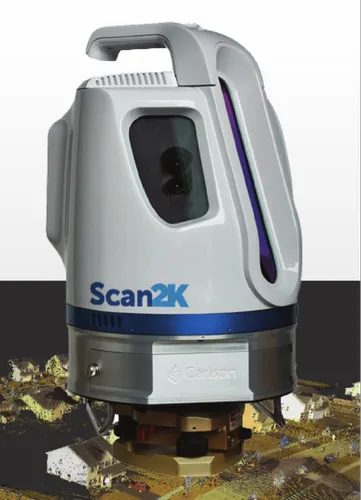
One of the ATOS Q’s key selling points is the fact that it can be easily moved along an assembly line or from one site to another. It can’t be qualified as “portable”, but is without a doubt “transportable”.
The scanner also offers a lot of flexibility in part type and size thanks to its multiple lenses and is able to acquire difficult surfaces thanks to its blue light equalizer.
Read the full review: GOM ATOS Q review
Contact manufacturer Get a quote Add to comparison
Solutionix is part of the larger, South-Korean Medit group, and is known for its high-precision dental 3D scanners. Their C500 is able to scan larger objects while benefitting from the same, excellent precision and resolution. Its automatic turntable not only turns but also tilts, providing very thorough scans.
While the Solutionix C500 is sensitive to dark and shiny surfaces, it offers very clean data and high resolution when such surfaces are matted with special spray (like AESUB). The C500 comes with four different sets of lenses for varying fields of view, resolution, and accuracy.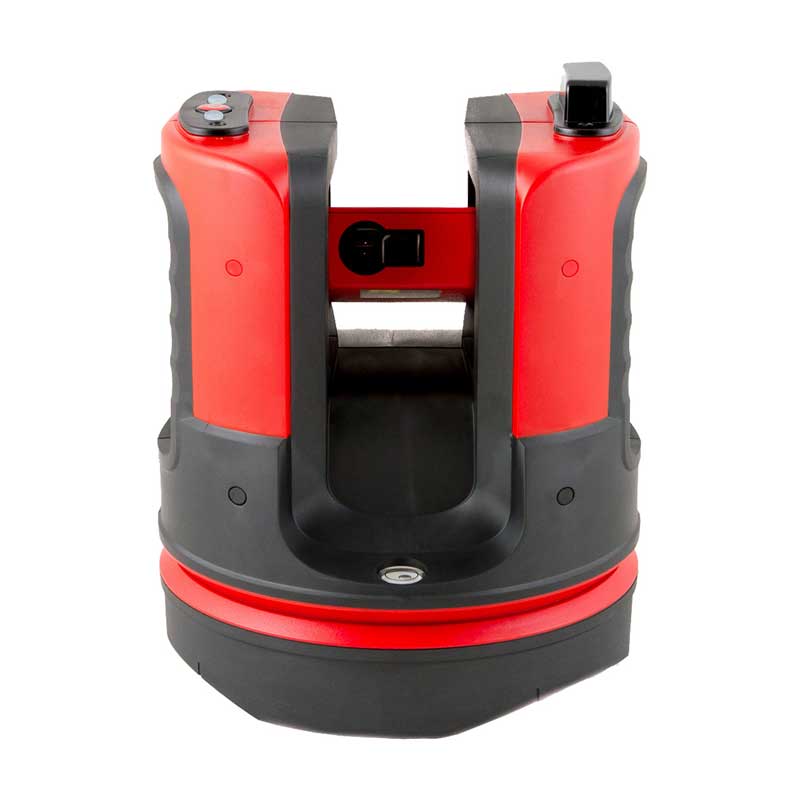 Its smallest lens set gives an accuracy of 10 microns and a resolution of just 28 microns (point-to-point distance).
Its smallest lens set gives an accuracy of 10 microns and a resolution of just 28 microns (point-to-point distance).
The C500 is particularly adapted to small parts, but can be mounted onto a tripod for the occasional large scan.
Contact manufacturer Get a quote Add to comparison
Affordable 3D scanners for makers
This selection includes some of the best affordable 3D scanners for makers.
| Brand | Product | Accuracy | Country | Price Approximate starting prices based on supplier-provided information and public data. Prices may vary by region, over time and do not include additional products or services (taxes, shipping, accessories, training, installation, …). | |
|---|---|---|---|---|---|
| Scan Dimension | SOL | – | Denmark | $ 599609 €531 £89,285 ¥ | Buy |
| Revopoint | POP 2 | 0.1 mm0.003937 in | China | $ 699711 €620 £104,190 ¥ | Buy |
| Creality | CR-SCAN 1 | 0.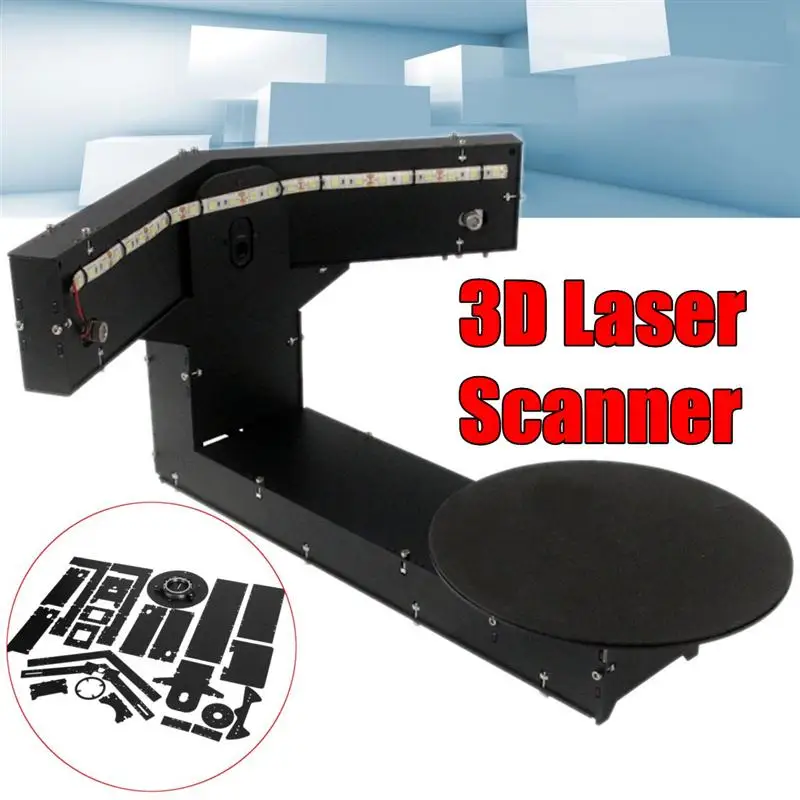 1 mm0.003937 in 1 mm0.003937 in | China | $ 700700 €621 £104,339 ¥ | Contact |
| Matter and Form | Scanner V2 | 0.1 mm0.003937 in | United States | $ 749761 €664 £111,643 ¥ | Buy |
| Shining 3D This brand is a certified partner from our network. | EinScan-SE (Elite) | 0.1 mm0.003937 in | – | $ 1,1991 219 €1,064 £178,718 ¥ | Contact |
Expand to see more specs
The products in the table are ranked by price (low to high).
| Brand | Product | Technology | Country | Price Approximate starting prices based on supplier-provided information and public data. Prices may vary by region, over time and do not include additional products or services (taxes, shipping, accessories, training, installation, …). | |
|---|---|---|---|---|---|
| Scan Dimension | SOL | Laser triangulation | Denmark | $ 599609 €531 £89,285 ¥ | Buy on Amazon France |
| Revopoint | POP 2 | Structured light | China | $ 699711 €620 £104,190 ¥ | Buy on Revopoint |
| Creality | CR-SCAN 1 | Structured light | China | $ 700700 €621 £104,339 ¥ | Contact manufacturer |
| Matter and Form | Scanner V2 | Laser triangulation | United States | $ 749761 €664 £111,643 ¥ | Buy on Amazon US |
| Shining 3D This brand is a certified partner from our network. | EinScan-SE (Elite) | Structured light | – | $ 1,1991 219 €1,064 £178,718 ¥ | Contact manufacturer |
Overview of the best affordable 3D scanner options
Revopoint launched the POP 2 towards the end of 2021 after a successful Kickstarter campaign with the original POP. We reviewed the original POP shortly before this release, and it seems that some of the quacks (mainly software-related) we encountered have since been worked out. Their new software features a calibration process and a new “Wi-Fi host” mode.
The POP 2 is an interesting option for makers or beginners looking to learn more about 3D scanning. We wouldn’t particularly recommend it for professional use cases, though it can get the job done if you don’t need high resolution.
The Revopoint POP 2 can be used on a small tripod or as a handheld device, and is able to capture colors.
Buy on Revopoint Add to comparison
The EinScan-SE is a powerful entry-level desktop 3D scanner designed to capture small- to medium-sized objects in 3D.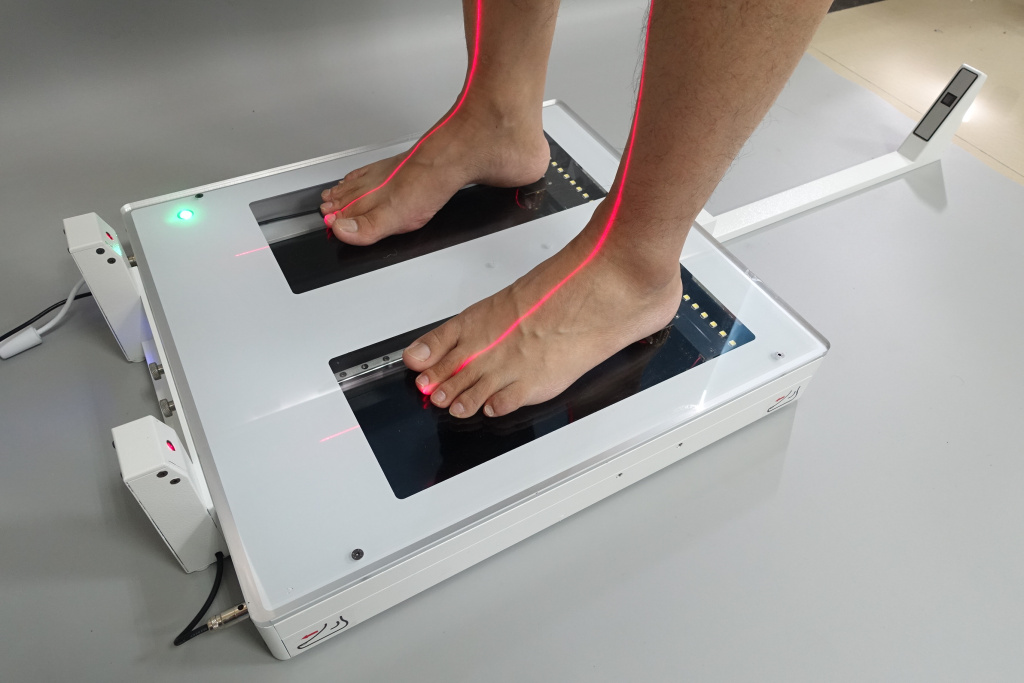 Launched back in 2017, it’s still relevant today as an affordable, professional-grade option.
Launched back in 2017, it’s still relevant today as an affordable, professional-grade option.
It is based on white structured light technology and offers two 3D capture modes: Fixed Scan and Auto Scan (with a rotating table). The Shining 3D EinScan-SE is a versatile and fast 3D scanner, suitable for a wide range of applications and designed with 3D printing applications in mind.
Contact manufacturer Add to comparison
This affordable desktop 3D scanner is geared towards hobbyists and tech enthusiasts. The SOL 3D scanner is equipped with an automatic turntable to complement its hybrid 3D scanning technology (a combination of structured light and laser triangulation).
Scan Dimension notes that this 3D scanner is easy to use, thanks to a simplified app that lets users avoid complex calibration and software manipulation.
Buy on Amazon France Add to comparison
The CR-SCAN 1 is another 3D scanner under $1,000. It can be used on a tripod as well as in handheld mode. According to Creality, the use of markers is unnecessary thanks to their AI-based alignment algorithm.
According to Creality, the use of markers is unnecessary thanks to their AI-based alignment algorithm.
Contact manufacturer Add to comparison
Matter and Form has been producing affordable desktop 3D scanners since 2014. The 3D Scanner V2 (a.k.a. MFS1V2) is, as its naming suggests, the second version of their flagship product, the Matter and Form MFS1V1 3D scanner.
It boasts a great price-to-performance ratio and is able to quickly scan 3D objects while displaying results in real time. Matter and Form also manufactures the Bevel dongle for use with 3D scanning smartphone apps.
Buy on Amazon US Add to comparison
Metrology 3D scanner selection
3D metrology is the process of acquiring highly accurate physical 3D measurements of an object. The result is a digital 3D model that users can analyze or retro-engineer.
Take quality inspection, for example. Professionals can compare the 3D scan to a reference CAD model to make sure the object respects established norms and standards.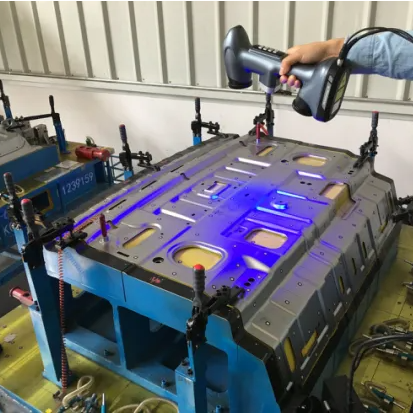 3D metrology helps ensure product quality while saving time and, thus, lowering costs.
3D metrology helps ensure product quality while saving time and, thus, lowering costs.
Handheld 3D scanner selection
Handheld 3D scanners have been gaining a lot of popularity over the past few years. They offer various benefits over other types of 3D scanners:
- Ability to access hard-to-reach places
- Relative ease of use
- Portability
Their versatility makes them suitable for a wide range of industries, including automobile, aerospace, engineering, and design, and some can even be used for 3D body scanning.
SLAM 3D scanner selection
SLAM (Simultaneous Localization and Mapping) technology allows a device to position itself and navigate through a given space based on its surroundings. Sometimes called CML (Concurrent Mapping and Localization), it was initially developed for robots and autonomous appliances.
In 3D scanning (mobile mapping), SLAM algorithms combine and use the sets of data collected from one or more sources to track the scanner’s position, all while building up an accurate, complete 3D point cloud of the surrounding environment.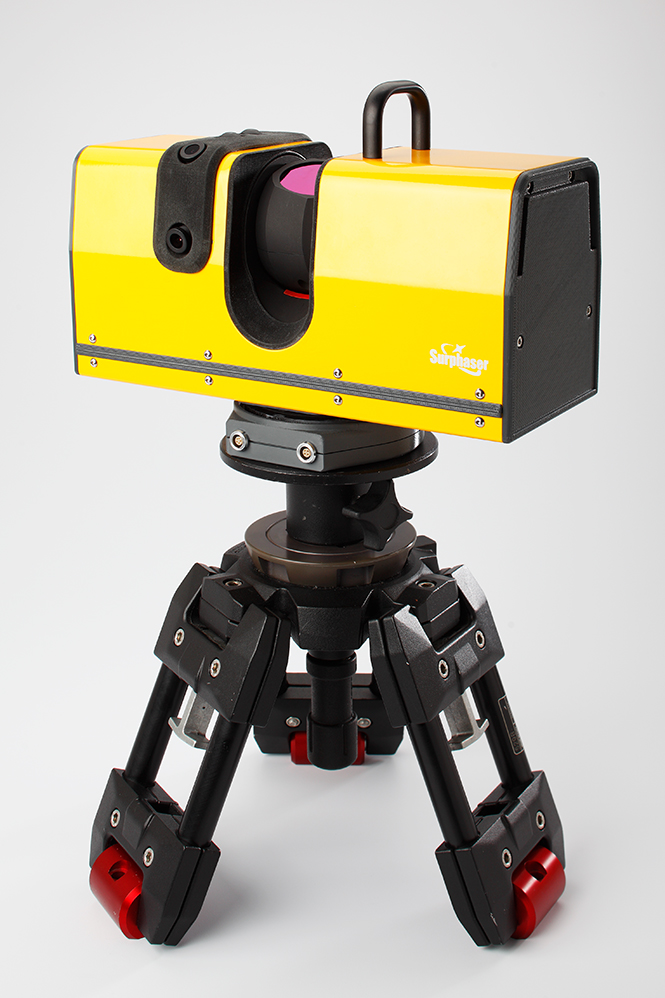
SLAM-based 3D scanners can work in extremely remote locations where GPS or GNSS signals are unavailable, and make it easy to quickly 3D scan large areas like building sites and underground caves.
TLS (Terrestrial Laser Scanner) selection
Terrestrial laser scanning (TLS) is a form of 3D scanning in which tripod-mounted laser scanners are used to capture large objects and environments. The technique is widely used in construction, surveying, forestry, and other disciplines.
Also known as long-range laser scanning, TLS involves deploying a scanner in a static location, whereas other laser scanners may be handheld or mounted to vehicles to capture data from a greater number of vantage points. TLS produces more accurate scans than mobile scanning — at the expense of speed and simplicity.
These 3D scanners are often generically called LiDAR scanners, though terrestrial scanners aren’t the only type of scanner to use the technology.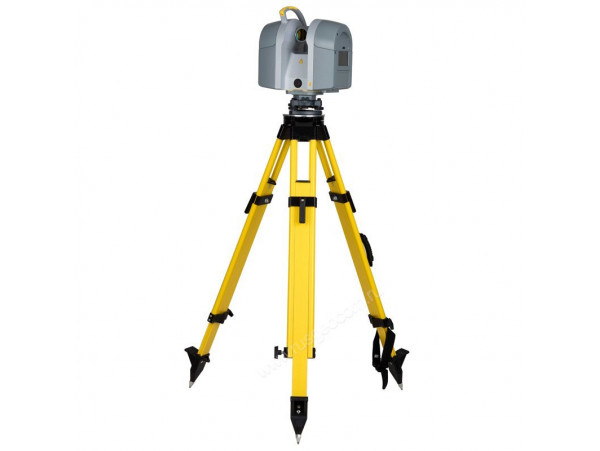
Desktop dental 3D scanner selection
Bit by bit, dentists are beginning to replace traditional methods with digital dentistry. This involves the use of digital capture, digital design, and digital production technologies to improve the speed, accuracy, and profitability of dental practice.
A key part of digital dentistry is the use of 3D scanners, which capture 3D shapes using a combination of cameras and light projection before transferring the result to a computer.
Desktop dental 3D scanners capture dental models or impressions (negative imprints of a patient’s teeth and gums) and are usually used in a laboratory setting.
Jewelry 3D scanner selection
A popular use of 3D scanning technology is jewelry 3D scanning. This is the process of 3D scanning jewelry, precious metals, and gemstones with the goal of creating a digital copy of the original object. The digital twin can be used for many purposes, such as repairing or duplicating a valuable item.
3D scanners have been adopted as a supplementary tool by traditional jewelers, but the technology has also allowed newcomers to enter the field, many of which have combined 3D scanning with jewelry 3D printing.
Most jewelry 3D scanners are enclosed or partly enclosed desktop machines that offer ideal lighting conditions. Desktop jewelry 3D scanners almost always feature an automatic turntable, or auto-rotating table, on which the piece of jewelry is placed to be scanned.
3D body scanner selection
3D body scanners are designed to capture your full body in 3D. The result is a 3D model (or 3D avatar) of your exact body shape with accurate data such as body measurements, posture analysis, textures, …
Originally developed for the fashion industry as fast and accurate 3D measurement solutions, 3D body scanners are now used in various other fields such as healthcare, 3D figurines and 3D photos, fitness, and entertainment.![]()
To obtain a full-body 3D scan, the customer or patient holds a pose for a few seconds, which is the time it takes for the 3D scanner to capture images from all angles. The 3D software then reconstructs the final 3D model of the body by “stitching” all of the images together, generating a highly detailed 3D model. Models can have colors and textures depending on the type of body scanner.
Which 3D scanner is the best for me?
3D scanning can be used in a large variety of fields. For every application, the features necessary to generate a great 3D model are different. The 3D scanner must be chosen according to your desired use and results.
What the best 3D scanner is for you will depend on many factors, detailed below.
3D scanning field of application
The first thing to take into consideration is the field in which the 3D scanner will be used. It could be for example:
Professional use
- Small objects: dentists, jewelers, and other professionals can use 3D scanning to capture small pieces.
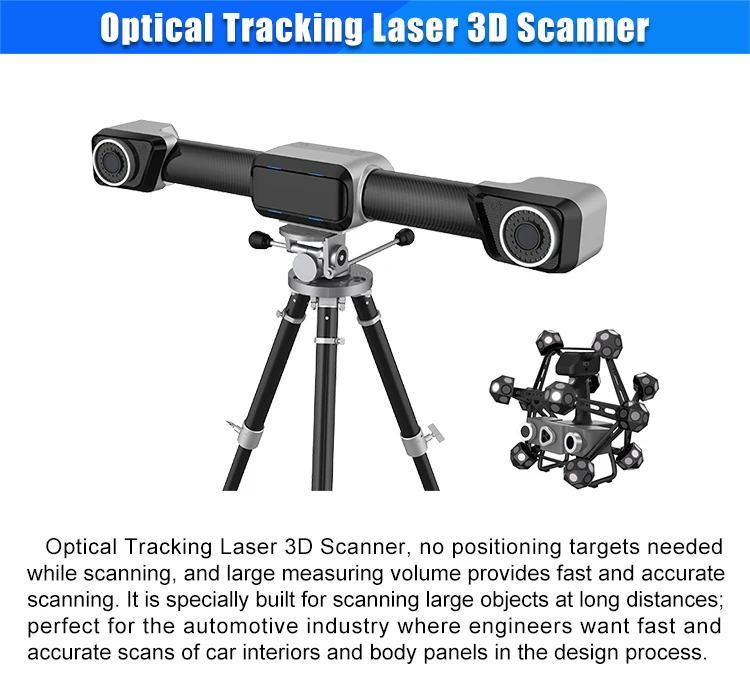
- Big objects: professionals such as architects and archeologists might need to 3D scan large objects such as statues, archeological fields, or buildings.
- 3D body scanning is increasingly used in various professional fields such as healthcare and 3D figurines.
Personal use
- Occasional scanning: A person might need to use 3D scanning on rare occasions or maybe just one time.
- 3D scanning on a regular basis: You can use 3D scanning for various things from making personalized objects to making a replica of yourself, friends, or family members.
Type of 3D scanned object
Dimensions and distance of the object (scan area and scanning range)
The “best 3D scanner” will depend on the dimensions and the distance of the objects you wish to 3D scan. A desktop 3D scanner can’t 3D scan a 2-meter-tall statue, and a handheld 3D scanner might not be the best option to 3D scan a very small and precise piece.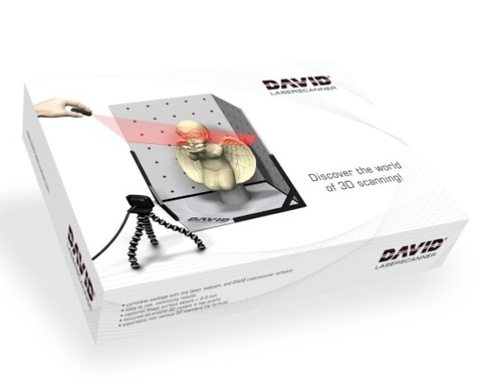
Surface of the object
Not every 3D scanner is able to capture colors. For color capture, you need a scanner with photogrammetry.
It can also be challenging to capture objects with black, shiny, or reflective surfaces. However, as 3D scanning OEMs fine-tune their technology and hardware, such surfaces are becoming less and less of a challenge. For cases where it is a challenge, it is always possible to use a white mattifying spray.
Desired resolution
Not all 3D scanners offer the same level of resolution. Therefore, depending on the quality you need, some 3D scanner models are more adapted than others. Reverse engineering requires high resolution and precision, for example.
Desktop 3D scanners
Desktop 3D scanners can be ideal for both professionals and hobbyists that need to scan small parts. They tend to be more accurate since you aren’t holding and moving the 3D scanner around yourself.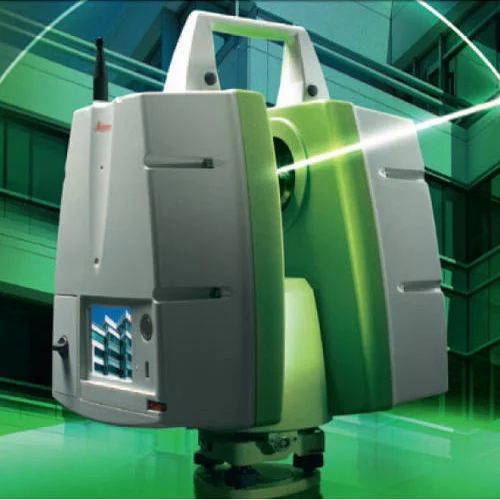
Also, many desktop 3D scanners come with (or at least optionally) an automatic turntable, which makes it much easier to get clean 3D scans.
Handheld 3D scanners
Handheld 3D scanners, a.k.a. portable 3D scanners, are versatile and can 3D scan small to very large objects. They also enable users to 3D scan hard-to-reach places. The precision and the ability to capture color and texture will depend on the 3D scanner model.
3D body scanners3D body scanners have applications in numerous fields.
- Professionals: professionals might want to 3D scan a person to make a 3D figurine, prepare for a surgical intervention, follow-up on a pregnancy or skin conditions, etc.
- Individuals: 3D body scanners can help with fitness goals and personal shape. These 3D scanners usually can’t capture color and texture but offer a high resolution.
3D scanning mobile apps
3D scanning mobile apps are ideal for occasional users that are not willing to or are unable to invest in a 3D scanner. They are not as precise as most 3D scanners, but mobile apps are a great way to get familiar with 3D scanning.
They are not as precise as most 3D scanners, but mobile apps are a great way to get familiar with 3D scanning.
3D scanner price
3D scanner prices can range from just several hundred dollars to over $100,000.
Desktop 3D scanner price
Desktop 3D scanner prices vary a lot from one model to another. It can start at a few hundred dollars and can top out at around $50,000 for the more advanced 3D scanners. More industrial-grade, robot-mountable scanners can cost double.
Handheld 3D scanner price
The handheld 3D scanner price range is very wide. A professional handheld 3D scanner can start at around $5,000 and can reach up to over $70,000 for very high-end and advanced 3D scanners.
There are plenty of great entry-level options for a couple of thousand dollars. Mid-range handheld 3D scanners tend to cost between $10,000 and $30,000.
Industrial 3D scanner price
Industrial 3D scanners generally offer more cutting-edge features and higher precision.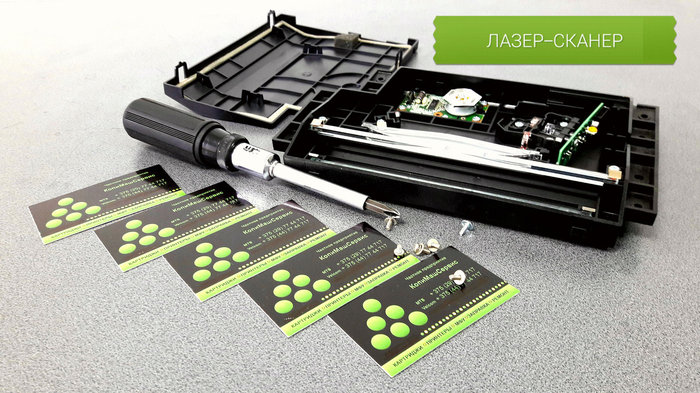 Hence, their prices can be pretty high, ranging from $10,000 for the simplest ones to more than $100,000 for the most evolved ones.
Hence, their prices can be pretty high, ranging from $10,000 for the simplest ones to more than $100,000 for the most evolved ones.
3D scanning applications
There are many reasons to buy a 3D scanner, for various industries and applications.
Reverse engineering
Reverse engineering, also known as retro-engineering, is the process of extracting information from an object or process and studying it. 3D scanners can be used to capture all the parts of a disassembled object to create a 3D model. The user will then be able to digitally study it in 3D afterward.
Jewelry
Jewelers are starting to use 3D printing and 3D scanning to build casts in order to create amazing jewels. Read more on our 3D printing and 3D scanning for jewelry page.
Dental
Dentists and dental labs are using 3D printing to build and create various dental appliances. Find more information on our 3D printing and 3D scanning for the dental industry.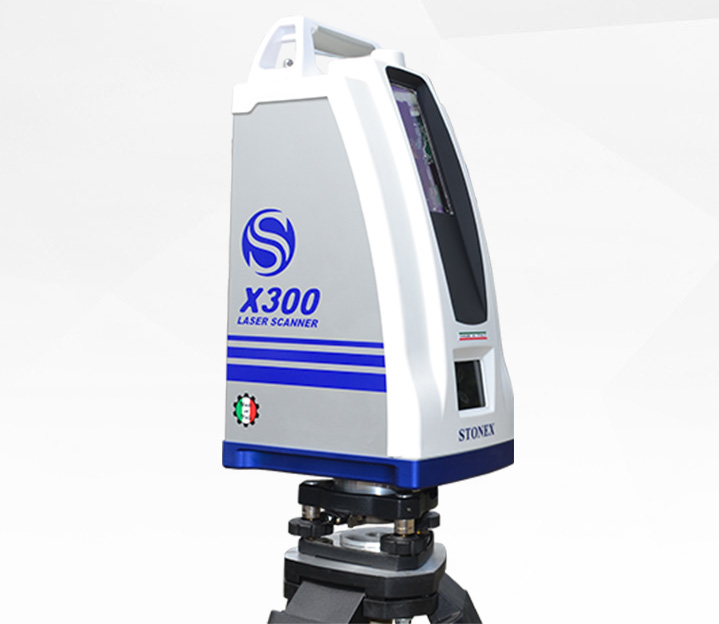
Medical
3D scanners are very versatile and are used in many different ways in healthcare, from making prosthetics to studying a person’s posture. Find more information in our guide to 3D scanning and 3D printing for the medical industry.
A dental 3D scan by Pierre-Antoine.Metrology/inspection
Industries need to make sure their factories are producing perfect products that are perfectly in line with the products’ reference dimensions. 3D scanners enable professionals to efficiently measure potential discrepancies.
Figurines and 3D selfies
3D portraits or mini-me’s are increasingly popular. To make one, you scan yourself in 3D and 3D print your mini lookalike. To learn more about the subject, you can visit our 3D printed figurines, 3D selfies, and 3D portraits page.
Architecture
Architects can use 3D scanning to capture an area, building, or habitation and present it in a more efficient way to their clients.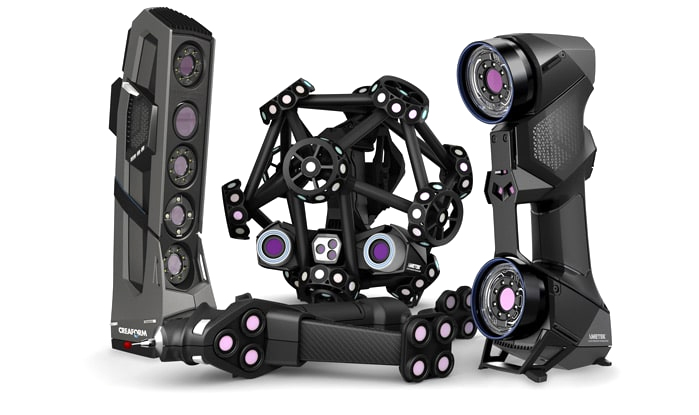 Find more information on our 3D scanning and 3D printing for architects page.
Find more information on our 3D scanning and 3D printing for architects page.
Archeology and museums
Archaeologists, museum curators, and researchers are starting to use 3D scanning to get a better view and capture ancient pieces. To read more about this topic, you can visit our 3D printing and 3D scanning in archeology and cultural preservation page.
A dot cloud of Notre Dame. Source: engadgetOverview of 3D scanning technologies
Photogrammetry
Photogrammetry consists of taking measurements from photographs to recover the exact positions of surface points.
The principle of photogrammetry is to analyze several photographs of a static subject, taken from different viewpoints, and to automatically detect pixels corresponding to the same physical point.
Photogrammetry enables scanners to capture an object’s color (a.k.a. texture). This technology also often serves to detect positioning markers (sticky targets placed on or around the object to help the scanner precisely align scans together).
Structured light
3D scanners using structured light project a series of linear light patterns onto an object.
The system is then able to examine the deformations of each line and to calculate the distance between the 3D scanner and the object’s surface. With this data, the software is able to build an accurate 3D model of the object.
Structured light 3D scanning technology. Source: Depth BiomecanicsTriangulation
A 3D scanner using triangulation technology will project a laser beam on the object’s surface and measure the deformation of the laser ray (similar to structured light, but with one or more lasers).
3D scanning laser triangulation technology. Source: NeoMetrixContact
Contact 3D scanners probe the subject via physical touch. A touch probe moves along an object’s surface to record 3D information.
For more precise and detailed explanations, you can visit our 3D scanning technologies page.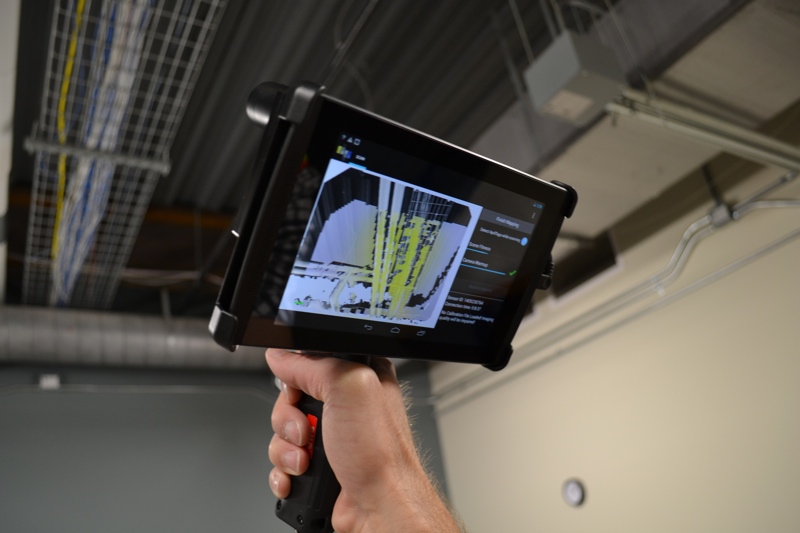
FAQ
What is the most accurate 3D scanner?
The most accurate 3D scanners are metrology 3D scanners, which generally offer an accuracy of around 20 microns.
Is a 3D scanner worth it?
This is entirely up to how much you will be using your 3D scanner. We can however say that 3D scanning is an impressive technology that does help save a lot of time for product design, reverse engineering, part inspection, and many other use cases.
How much does a good 3D scanner cost?
Again, the definition of “good” is quite subjective in 3D scanning. Some of the best 3D scanners we have reviewed cost between $10,000 and $30,000. But a $5,000 3D scanner can do “good” if its specs meet your requirements.
Is 3D scanning expensive?
Not only is 3D scanning hardware generally expensive, but so are the necessary, professional software solutions.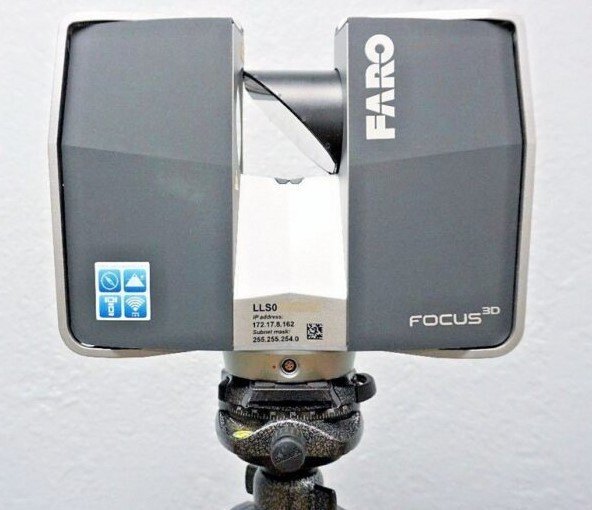 Sometimes, it’s a one-time fee for a permanent license; other times, a monthly or yearly subscription is the only way to access a software suite. And to run such software, you will likely require a powerful, monster of a PC with a lot of RAM and a high-end graphics card. You may also need to buy a tripod or turntable if they aren’t included in your 3D scanner package. All of this can quickly amount to several thousand dollars.
Sometimes, it’s a one-time fee for a permanent license; other times, a monthly or yearly subscription is the only way to access a software suite. And to run such software, you will likely require a powerful, monster of a PC with a lot of RAM and a high-end graphics card. You may also need to buy a tripod or turntable if they aren’t included in your 3D scanner package. All of this can quickly amount to several thousand dollars.
Day-to-day 3D scanning expenses can include cans of mattifying spray and rolls of adhesive markers if you need them. Other than that, aside from potential software subscriptions, there are no extra hidden costs.
3D Scanners: What Are the Best Available Low-Cost Solutions?
Published on July 16, 2022 by Carlota V.
3D scanning is often used in the additive manufacturing (AM) sector to design a 3D model more easily than via modeling software. It captures data that is then transformed into a 3D model which can then be 3D printed. 3D scanners are based on two main technologies – laser triangulation and structured light – which will allow to obtain more or less precise details depending on the chosen device. Several affordable solutions, compared to professional scanners which are much more expensive, are available today to allow many users to bring their projects to life: whether you are a maker, a teacher or an industry leader, on of these low cost 3D scanners is bound to suit your needs! Easy to handle and transport, we have chosen some 3D scanners under $8,000 (€7,000), sorted by increasing price.
3D scanners are based on two main technologies – laser triangulation and structured light – which will allow to obtain more or less precise details depending on the chosen device. Several affordable solutions, compared to professional scanners which are much more expensive, are available today to allow many users to bring their projects to life: whether you are a maker, a teacher or an industry leader, on of these low cost 3D scanners is bound to suit your needs! Easy to handle and transport, we have chosen some 3D scanners under $8,000 (€7,000), sorted by increasing price.
3D Scanner 2.0 from XYZprinting
Taiwanese manufacturer, XYZprinting, currently offers 5 scanners, though today we will focus on one of their more low-cost 3D scanners, the portable and high-resolution 3D Scanner 2.0. With a wider scanning range than its younger sibling the 1.0 A, the scanner can scan objects that are 5 x 5 x 5 ~ 100 x 100 x 200 cm using an Intel® RealSense™ Camera. The scan resolution is also superior to the 1.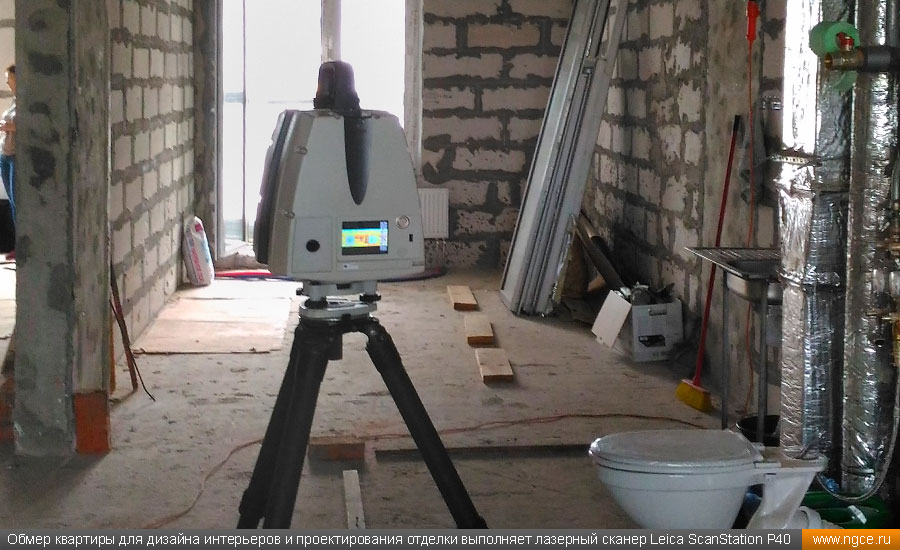 0A, between 0.2 and 1.5 mm with an operating range ranging from 25 to 60 cm. The manufacturer also provides XYZScan Handy, a scanning and post-editing software to edit your models after scanning. The product is lightweight measuring 41 x 157 x 61 mm with a weight of 238 g. It is available from €199.
0A, between 0.2 and 1.5 mm with an operating range ranging from 25 to 60 cm. The manufacturer also provides XYZScan Handy, a scanning and post-editing software to edit your models after scanning. The product is lightweight measuring 41 x 157 x 61 mm with a weight of 238 g. It is available from €199.
Structure Sensor from Occipital
The Structure Sensor solution adds precise 3D vision to your mobile device, enabling 3D scanning among other features. The only equipment you will need for this 3D scanner to work is an iPad, then once you have downloaded the app Skanect Pro, it will work instantly.
The new version of this device is smaller than the last, 109mm x 18mm x 24mm, and weighs about 65 g. It is recommended to use it on a 0.3 m to 5m scanning range. Some other features on this device include indoor mapping and virtual reality gaming! The Structure Sensor retails for $527, making it a low-cost scanner when compared to many other options.
POP 3D Scanner from Revopoint
The Revopoint POP is unique among 3D scanners as it has the distinction of being part of the highest crowdfunded campaign for a 3D scanner in Kickstarter, raising more than $2.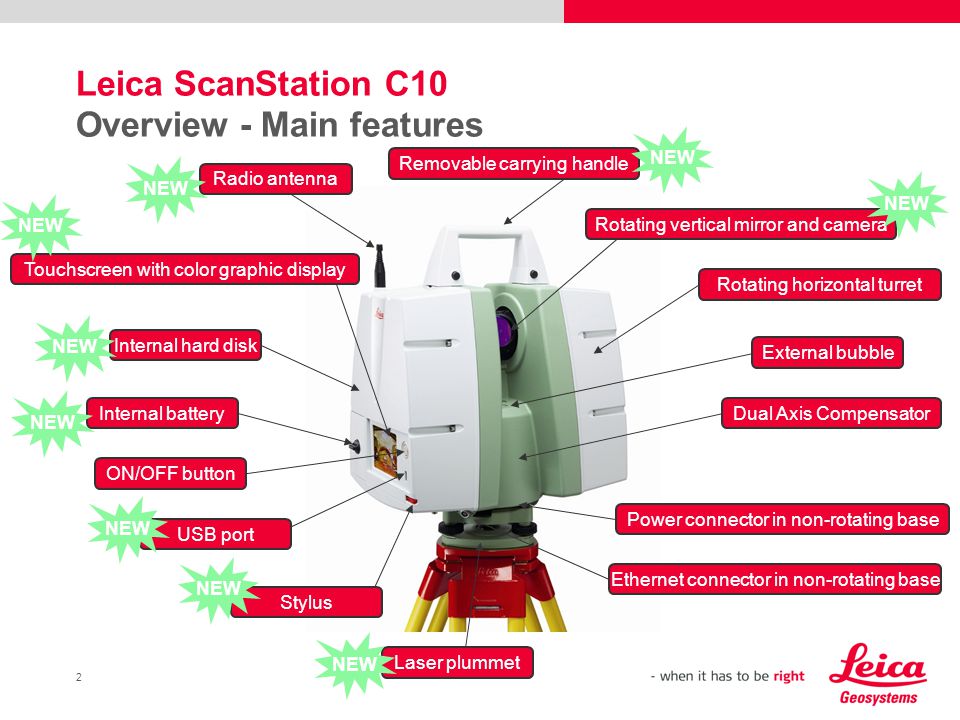 28 million USD. It was developed by Revopoint, a company founded in 2014 by a group of young doctors and researchers from MIT, Kent University and other higher education institutions when they decided to focus on developing easy-to-use and cost-effective 3D scanners. It is safe to say that they certainly succeeded with their POP 3D scanner.
28 million USD. It was developed by Revopoint, a company founded in 2014 by a group of young doctors and researchers from MIT, Kent University and other higher education institutions when they decided to focus on developing easy-to-use and cost-effective 3D scanners. It is safe to say that they certainly succeeded with their POP 3D scanner.
A binocular structured light 3D scanner that uses infrared as its light source, the Revopoint POP is a full-color scanner with an accuracy of up to 0.3mm, texture scan and an 8Fps scanning speed. It has a number of interesting features, including the fact that it is easy to use outdoors because of it’s portable and can be powered by a power bank. With a cost of the scanner of only $549 in USA and about $599 in Europe, it is one of the most affordable options on our list, all while still being an effective, precise, high-resolution scanner. Not to mention, it can be used by a variety of users, as it supports four OS platforms – Windows, Android, Mac and iOS.
Creality CR-Scan 01
Known for its affordable desktop 3D printers, manufacturer Creality has also developed a low-cost 3D scanner, the CR-Scan 01. Weighing only 1.91 kilos, this portable scanner is easy to handle and offers a scanning area of 536 x 378 mm. You will be able to scan your objects with an accuracy of up to 0.1 mm and export them in stl or obj format. Several scanning modes are offered, either manual or on a turntable. It is currently available from 589 €.
SOL 3D Scanner from Scan Dimension
This scanner was developed by Scan Dimension, based in Denmark, and is essentially a hybrid solution. It uses a combination of laser triangulation and white light technology to 3D scan real-life objects. The SOL 3D scanner can provide a resolution of up to 0.1 mm. The 3D scanning process is automated and you can choose between a near and far scanning mode.
The SOL 3D scanner also includes software to simplify your entire workflow. In a few steps you will be sending your 3D model to your 3D printer.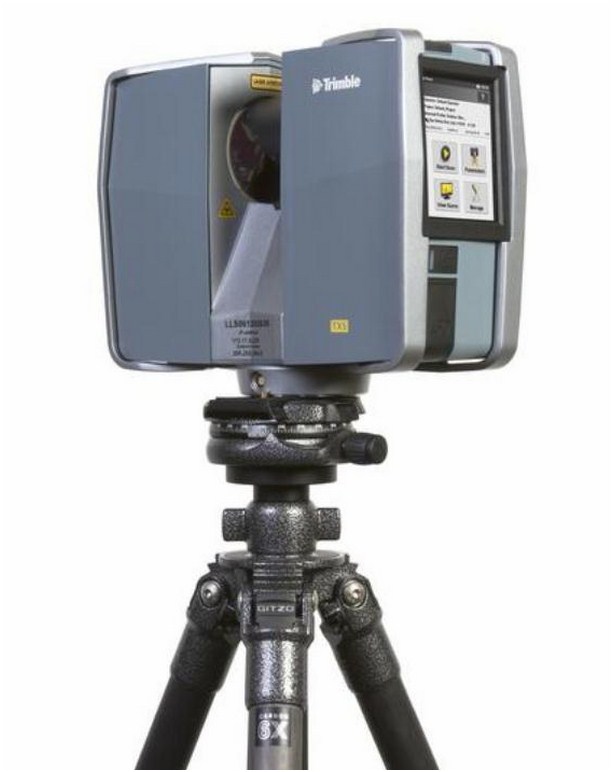 This is a solution meant for makers, hobbyists, educators and entrepreneurs who may not have the most experience with 3D scanners but still want to achieve great results with a relatively low cost. The SOL 3D scanner retails for $699.
This is a solution meant for makers, hobbyists, educators and entrepreneurs who may not have the most experience with 3D scanners but still want to achieve great results with a relatively low cost. The SOL 3D scanner retails for $699.
V2 from Matter & Form
The Matter and Form 3D Scanner V2 is a desktop 3D scanning solution manufactured by Matter & Form, a company founded in 2013. This company has made it its mission to develop and distribute affordable, high-resolution 3D scanners. With the V2, it has achieved that mission: the 3D scanner is available from $750 and is capable of producing high-quality scans with an accuracy of up to 0.1 mm. It weighs 1.71 kilograms (3.77 lbs) and has a height of 35.5 cm (13.5 in) and a width of 21 cm (8.25 in). The slim and foldable design allows the device to fit on small desks. The V2 allows scanning of objects with a maximum height of 25 cm (9.8 in) and a diameter of 18 cm (7.0 in). Windows and Mac scan files are supported, with multiple export options for 3D printing as well.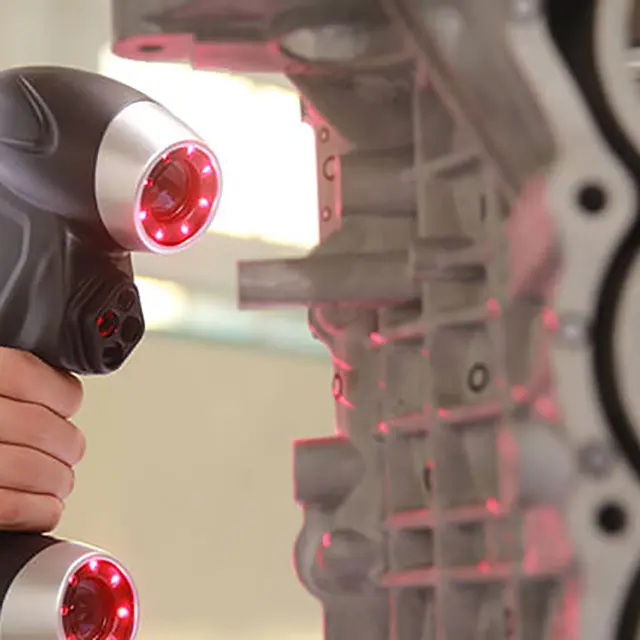
RangeVision NEO
The NEO 3D scanner from the manufacturer RangeVision is an entry-level device with two 2-megapixel cameras, which works using Structured Light Scanning (SLS) technology. With an automatic scan mode, the scanner is suitable for all those who have little experience in digitizing objects. The SLS-3D scanner can capture objects from 30mm to 1200mm with a precision of 0.05mm, with 3D scans created using RangeVision software. Also included is a turntable and tripod, which make scanning easier for the user. According to the manufacturer, the NEO’s scans are suitable for reverse engineering, 3D modeling, historic preservation and, of course, 3D printing. The RangeVision NEO is available from around €2,190, making it one of the few low cost desktop 3D scanners available.
Calibry, the low-cost 3D scanner, from Thor3D
Thor3D is a Russian manufacturer that is behind the Calibry portable 3D scanner. Based on structured light technology, it integrates a touch screen so that the user can follow the points it captures in real time.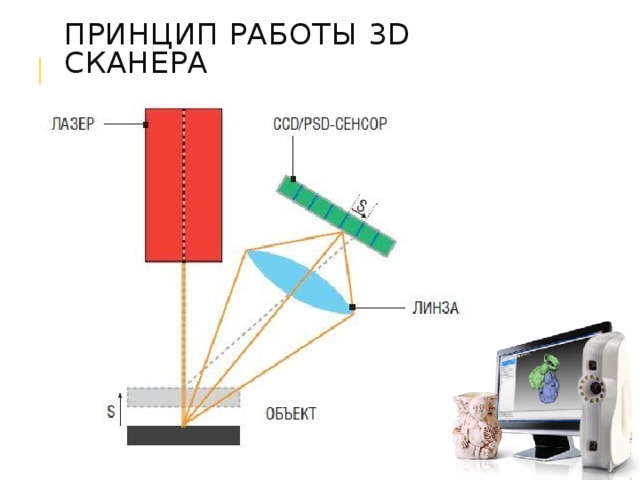 It offers accuracy down to 0.1 mm and is capable of scanning objects from 30 cm to 10 meters long. Black and glossy surfaces can be easily scanned and exported in stl, obj, ply or WRML formats. Finally, the Calibry is fast and convenient, capable of scanning up to 3 million points per second and weighing only 900 grams. It is available from 4,990 euros.
It offers accuracy down to 0.1 mm and is capable of scanning objects from 30 cm to 10 meters long. Black and glossy surfaces can be easily scanned and exported in stl, obj, ply or WRML formats. Finally, the Calibry is fast and convenient, capable of scanning up to 3 million points per second and weighing only 900 grams. It is available from 4,990 euros.
EINSCAN H from Shining 3D
The EinScan H is one of the most advanced versions of portable 3D scanners developed by the Chinese manufacturer Shining3D. Based on the hybrid structure light technology of LED and invisible infrared light, the EinScan H is able to perform human face scans more comfortably and without emitting strong light. It also incorporates a full-color camera and a large field of view for a truly impressive final quality of the models, ready for processing in just a few minutes.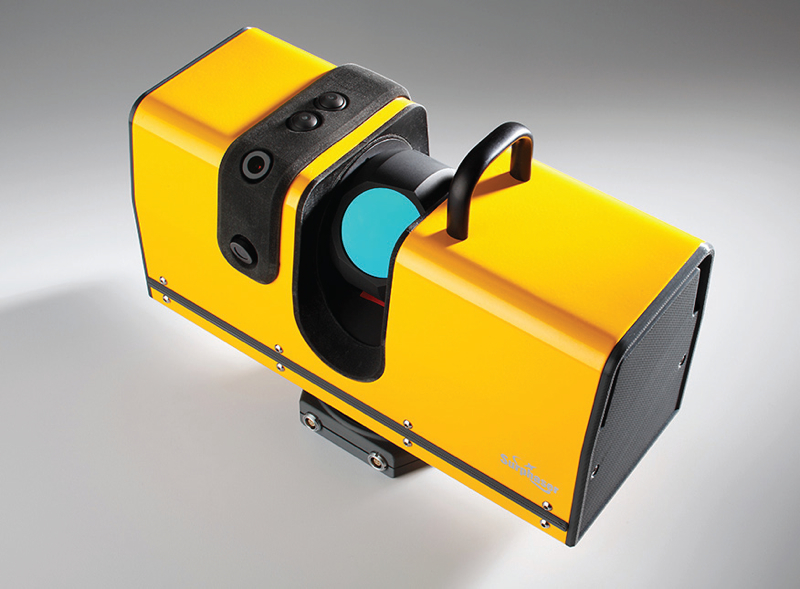 Its high resolution of 0.25 mm and data accuracy down to 0.05 mm make this a good choice in the market considering the price/performance ratio. In addition, it stands out for its light weight of almost 700g and intuitive user interface. The base price of this model is $5000 and you can get more information on the manufacturer’s website.
Its high resolution of 0.25 mm and data accuracy down to 0.05 mm make this a good choice in the market considering the price/performance ratio. In addition, it stands out for its light weight of almost 700g and intuitive user interface. The base price of this model is $5000 and you can get more information on the manufacturer’s website.
Eva Lite from Artec 3D
Artec 3D, based in Luxembourg, offers the Eva Lite as its cheapest option for 3D scanning. This professional scanner is specialized in the digitization of complex geometries, such as the human body, and is therefore increasingly used in the medical field. It works on the basis of structured light technology and, although it does not have the ability to capture colours and textures like most scanners of the brand, it has an accuracy of 0.5 mm.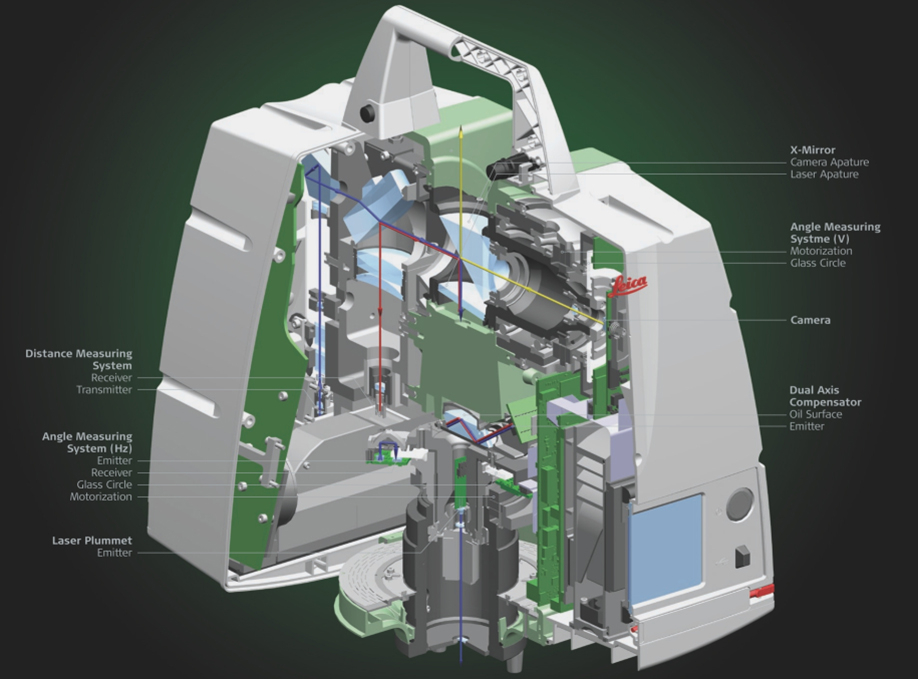
This 3D scanner works with the software package Artec Studio. Artec Studio is a powerful tool for an optimized 3D scanning process. This software is able to perform, assemble and repair 3D scans. It is currently available at a price of $9,800. You can find more information HERE.
Any other low cost 3D printing scanners you think should be on this list? Let us know in a comment below or on our Facebook and Twitter pages! And remember to sign up for our free weekly Newsletter, to get all the latest news in 3D printing send straight to your inbox! For more 3Dnatives articles about 3D scanners, click HERE.
3D scanning of any objects. Affordable prices. RF and CIS
3D scanning of any complexity
35% discount when ordering from 10 objects
Small objects
from 2 mm to 300 mm
- Price
- 5000 ₽ for 1 object
- Timing
- 1 day nine0004
- Precision
- 10 micron
40% discount when ordering from 10 objects
Medium-sized objects
from 150 mm to 5 meters
- Price
- 5000 ₽ for 1 object
- Timing
- 1 day
- Precision
- from 30 microns
Large objects
from 3 meters
- Price
- from 35 000 ₽ for 1 working day nine0004
- Timing
- 1 day
- Precision
- is determined by the formula
3D scanning for civil and industrial design
- We work with any object nine0083 Departure of a specialist throughout Russia
details
Important Information
- How can I tell if my scanned item is small, medium, or large?
- If your object fits into 2 categories at once, focus on the scanning accuracy that you need.

Our specialist will always help you - call +7 (495) 223 01 21 or write to [email protected] - How to choose 3D scanning equipment?
- Our specialist will select a 3D scanner specifically for your task, based on the size of your object and the required scanning accuracy.
Don't worry about it 🙂
Ready to discuss all your questions!
Fill out the form or call +7 (495) 223 01 21
Request a call
Additional services
Reverse engineering (reverse engineering)
leave a request more
Quality control and part geometry. Metrological analysis, measurement of wear and deformation
leave a request more
Industrial design development
leave a request more
BIM modeling
leave a request more
3D modeling
leave a request more
3D printing
leave a request more
Examples of our work
The most interesting orders of our clients in various industries
see all works
- nine0084
Obtaining a 3D support bearing
- #3D scan
more details
Mercedes car scan for video tour
- #3D scan
more
Aircraft 3D scan
- #3D scan
more details
NURBS modeling of rubber car mats
- #3D modeling
more details
3D modeling and control of deviations of the mechanism body part
- #3D modeling
more details
3D simulation of lifting unit
- #3D simulation
more details
3D Jewelry Stencils
- #3D Print
more details
3D print car headlight
- #3D print nine0087
- #3D printing
- #BIM modeling
- #BIM modeling nine0087
- #BIM modeling
- #Plastic molding
- #Measurements
- #Measuring work
- #Measuring work
- mechanical engineering, fabrication of complex structures and parts
- aviation, space industry, ship and automotive industry
- medicine and dentistry
- construction and architecture
- defense industry
- science and education
- jewellery, etc.
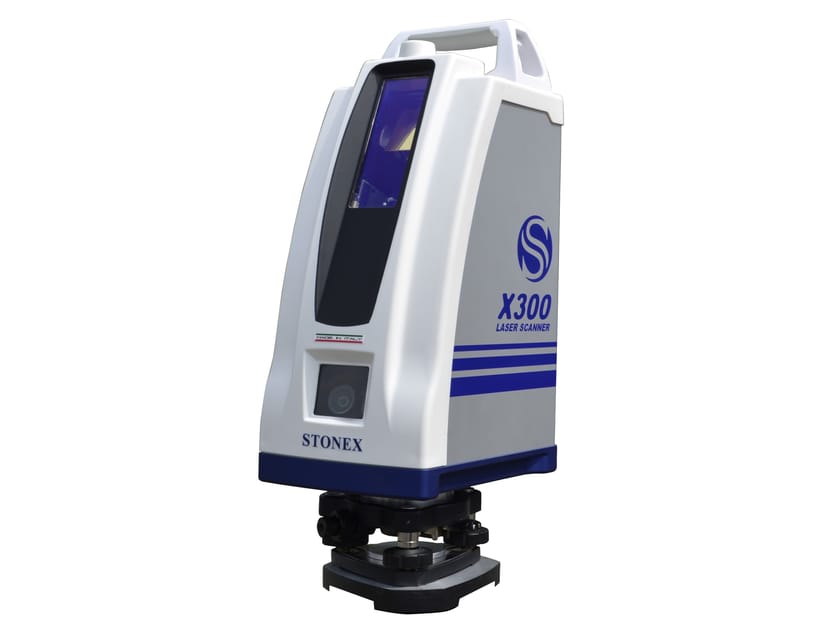
- the easiest way to create 3D copies of a physical object
- high measurement speed
- high fidelity to the original design and reproduction of the smallest details of the product
- the ability to transfer and save data not only about the shape and size of an object, but also about its texture and color
- significant savings in time, physical and material resources
more details
3D printing of a combine part from casting wax
more
BIM model for restoration of a cultural heritage site
more
BIM model for church restoration
details
Construction control of a building in Khimki
more details
Fork production
more details
Measurements of the facade of the fashion house Dior
details
Scanning the interior of the apartment
more details
Scanning a church in the Tver region to obtain data for restoration
details
Our clients
Aluminum and alumina production
Russian state company.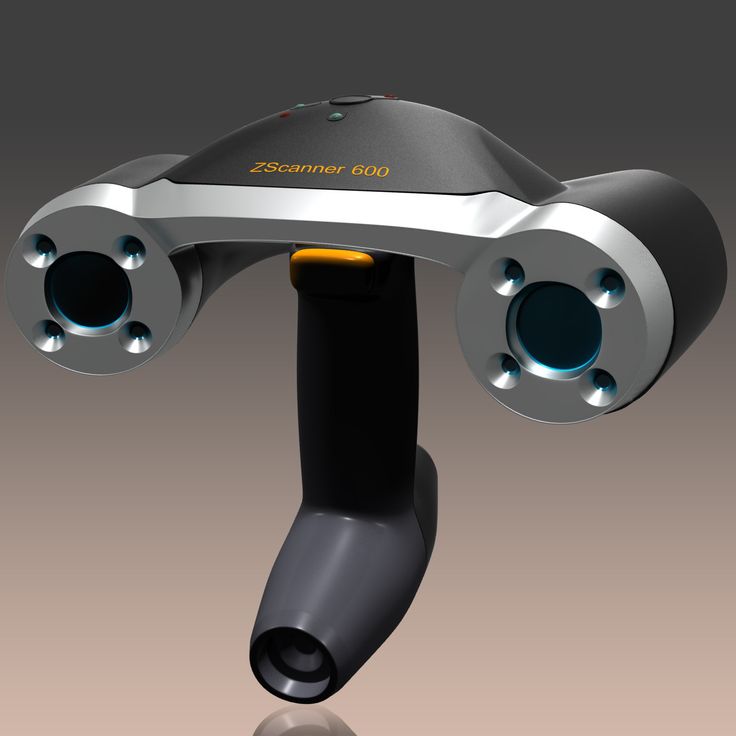 Operator of the Russian railway network
Operator of the Russian railway network
Manufacture of combat and civil aircraft. Flight personnel training
Russian airline. Domestic and international passenger air transportation
R&D in the field of nanotechnology, robotics, space activities, ammunition
Design and manufacture of equipment for thermal, nuclear and hydroelectric power plants
Defense enterprise. Military-technical cooperation of the Russian Federation with foreign partners
Russia's leading underwater shipbuilding design bureau
Design, manufacture and after-sales service of aircraft
Development and production of complexes, systems and communications equipment for the Armed Forces of the Russian Federation
Leading university of the Upper Volga region
Engineering university. One of the nine backbone universities in Russia
Leading enterprise in Russia for the production of metal superstructures of bridges
Russian instrument-making concern.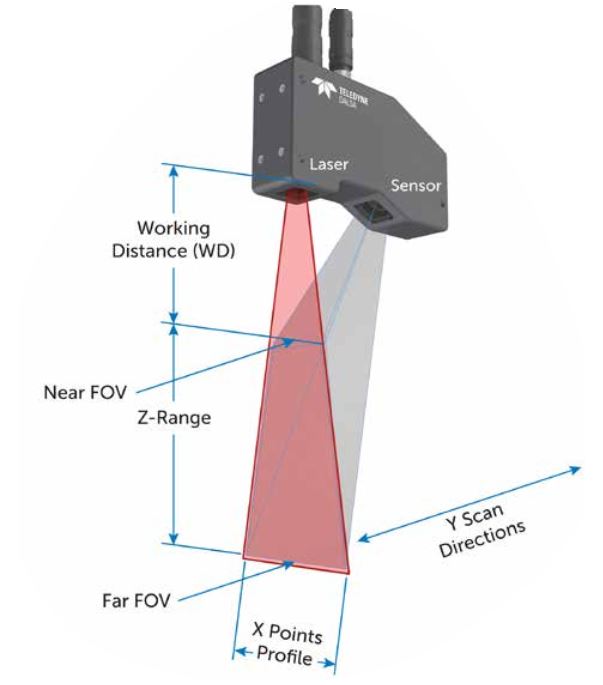 Production of electronic equipment for the Russian Navy
Production of electronic equipment for the Russian Navy
Creation of equipment for control systems of aviation and rocket technology, as well as for gas and oil pipelines
The largest research institute in the country, solving problems of defense, scientific and national economic importance
Development, manufacture and maintenance of engines for the aerospace industry
Development , production, testing, operation support, maintenance of aviation equipment
Creation and maintenance of the aerospace defense system in the interests of the security of the Russian Federation
Leading Russian developer of gas turbine engines for military and civil aviation
Manufacture of equipment for post-harvest processing, drying and storage of grain
3D scanning technology
3d scanning is the process of creating a three-dimensional copy of a real object, or digitizing it, using a special device - a 3D scanner.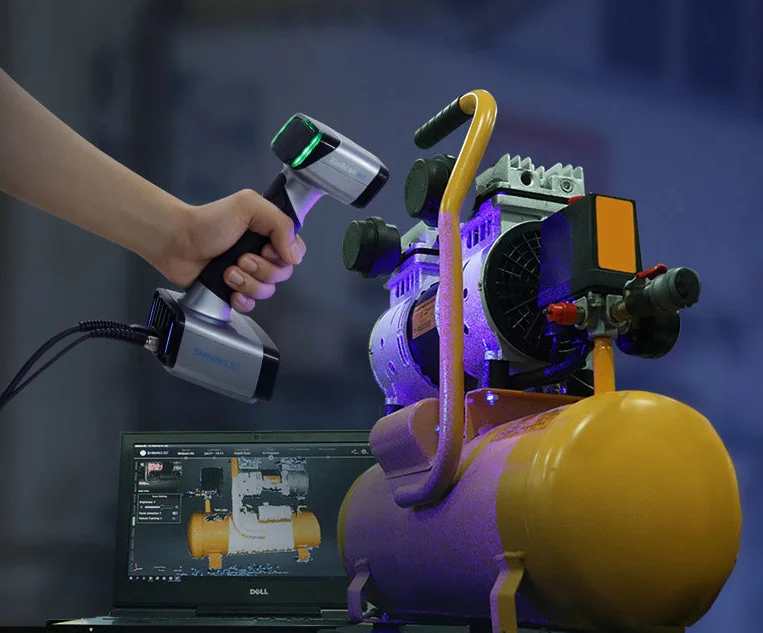 Today, there are many ways and settings for creating a digital model of objects. nine0005
Today, there are many ways and settings for creating a digital model of objects. nine0005
3D scanners make it easy to 3D scan even the smallest details from a wide variety of materials.
Basic scanning methods
There are currently two main 3D scanning methods: contact and non-contact.
Non-contact 3D scanners can scan both small and large objects such as buildings or monuments. They are divided into photogrammetric, laser and 3D devices using structured white light technology. The non-contact 3D scanning method involves the use of laser and light beams, allowing you to scan fragile objects without damaging them. nine0005
Applications
3d scanning is popular in a wide range of industries due to its versatility and simplicity. Key industries that use 3D scanning include:
A variety of 3D scanners allows manufacturers to choose exactly the device that will fully fit the purpose and size of the production tasks. Some 3D scanners are designed to digitize only small objects, while others are suitable for measuring buildings, structures and building structures. nine0005
3D scanning advantages
The main advantages of 3D scanning include:
3D scanning: price
The calculation of the price for 3D scanning is formed after determining the scope of work and is compiled individually for each project.
To calculate the exact price of the scanning service, you need to send us photos and dimensions of the object of measurement, as well as the purpose of the scan results, by e-mail. You can find the full list of required information here.
If you need 3d scanning services for your product, you can write to us at [email protected], call:
+7(495)223-01-21 or leave an online application.
Order service
Top Ten 3D Scanners from $100 to $100,000 / Habr
Do you need a 3D model for 3D printing? There are several ways for you: you can of course create your 3D model from scratch in a 3D modeling program or find a suitable one on the Internet, but you can also scan an existing object! The purpose of this review is to help you understand the variety of 3D scanners available and offer the best in every price segment from a photogrammetric smartphone app to professional 3D scanners. nine0005
Scanners are listed in ascending price order so you can choose the one that suits your budget and use the resulting 3D models for both 3D printing and animation.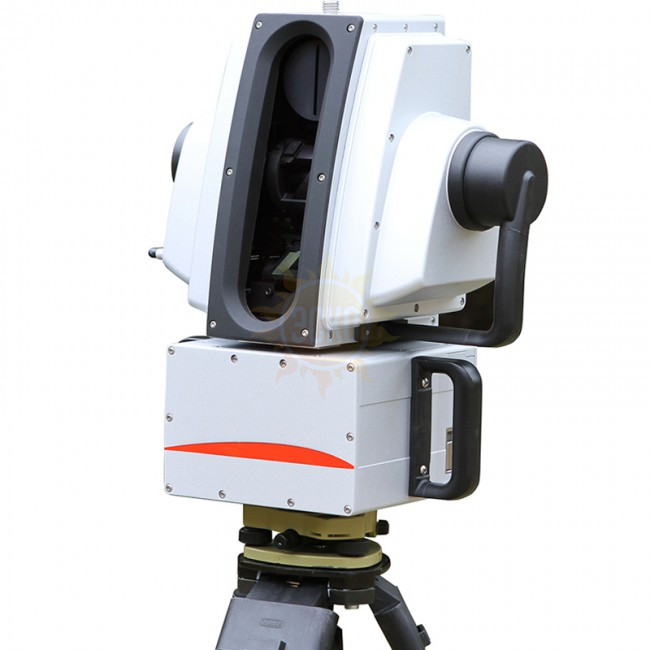
If you are not satisfied with the suggested solutions, there is an extended overview at this link.
3D scanner in hand:
1. Best smartphone app: Autodesk 123D Catch (free)
Autodesk 123D Catch is a free photogrammetric application. It allows you to create a 3D model from photographs of an object taken from different angles. You can use it to scan objects, people, and even the landscape. For some applications, if you don't need perfect accuracy, you don't need special equipment. This application actually provides quite good detail and is easy to use. However, it will take you at least 30 minutes for the app to process your photos as the processing takes place on the server and it takes time to send them. nine0005
2. Best DIY 3D Scanner: Kinect ($99.99)
The Xbox Kinect is designed to expand your gaming experience. It is not designed for 3D scanning, but you can easily find manuals and third party software (like ReconstructMe) to turn it into a 3D scanner. If your arms are growing out of your shoulders, this is an interesting and inexpensive solution for 3D scanning.
If your arms are growing out of your shoulders, this is an interesting and inexpensive solution for 3D scanning.
Price: $99.99
Resolution: 0.051 mm
)
This scanner can be attached to your tablet or phone (generally designed for iPad, but can be adapted to other devices). Lightweight and easy to use, with a very good resolution. Suitable for large items (can scan a full-length person) and outdoor scanning. You will be able to use it with software running on Occipital's SDK. This will increase the resolution and give you access to special features like room scanning. It probably won't be something you'll use for 3D printing, but it's interesting for game development, for example. nine0005
Price: $ 379
Resolution up to: 0.5 mm
accuracy to: 4 mm
4. The best of cheap manual 3D scanners: Cubife ($ 399)
3D-scanners may be it quite affordable and easy to use if you choose from inexpensive portable models. Cubify fits these criteria very well and has a relatively good resolution. But still, its capabilities are not enough for texture scanning and it is better to use it for subsequent 3D printing of one-color models. nine0005
Cubify fits these criteria very well and has a relatively good resolution. But still, its capabilities are not enough for texture scanning and it is better to use it for subsequent 3D printing of one-color models. nine0005
Price: $ 399
Resolution: 0.9 mm
DEMIRE AT THE DIGNITION OF 0.5 m: 1 mm
3D scanner on the table:
5. The best and cheapest 100D 3D 3D 3D 3D 3D 3D- Scanner: Matter and Form ($519)
If you're looking to take your quality to the next level, you can purchase a desktop 3D scanner. This model is compact, easy to use, and delivers good resolution, especially considering the price (not your go-to option if you're looking for perfection, but great for educational and demo purposes). The scanning process takes place with the help of a laser and a rotating platform. The scan takes about five minutes and simultaneously reads the texture of the object. nine0005
nine0005
Price: $ 519
Resolution: 0.43 mm
accuracy: ± 0.25 mm
6. The best device "two in one": XYZPRINTING DA VINCI 1.0 ($ 600) 9000 4000 this ($ 600) 9000 4000 combines a 3D scanner and a 3D printer. The quality of the models is not too high, but the price is very low for such a combined device. This makes the XYZprinting Da Vinci the easiest solution for beginners who want to get into the world of 3D scanning-printing. nine0005 7. Best value for money portable 3D scanner: Fuel3D Scanify ($1490) Price: $ 1490 8. Best price The scanner uses a different scanning technology than others. Instead of a dual laser scanning system, it uses a structured light source and cameras for fast scanning with very fine detail down to 0.06mm! The scanner comes with DAVID Pro Edition 3 software that works with OBJ, STL and PLY 3D file formats that can be exported to other programs for further editing. nine0005 Price: $ 3995 9. Best professional 3D scanner: SolutionIX REL The 3D scanner and its price provides much better scanning quality. Solutionix Rexcan is equipped with two cameras for greater accuracy. It uses optical phase shift triangulation technology and two high-resolution CCD cameras to provide high-precision data. The scanner can be used to scan larger objects by increasing productivity with a photogrammetric system.
Professional 3D scanners:
Very easy to use, intuitive, and feels good in the hand, this scanner delivers good accuracy and texture quality. The only limitation is that the size of the scanned area is limited, which is great for small objects, but for scanning a full-length person, for example, it will not work. nine0005
Resolution: 0. 35 mm
35 mm
accuracy: to 0.3 mm
Resolution: 0.06 mm
accuracy: 0.5% of the size of the object 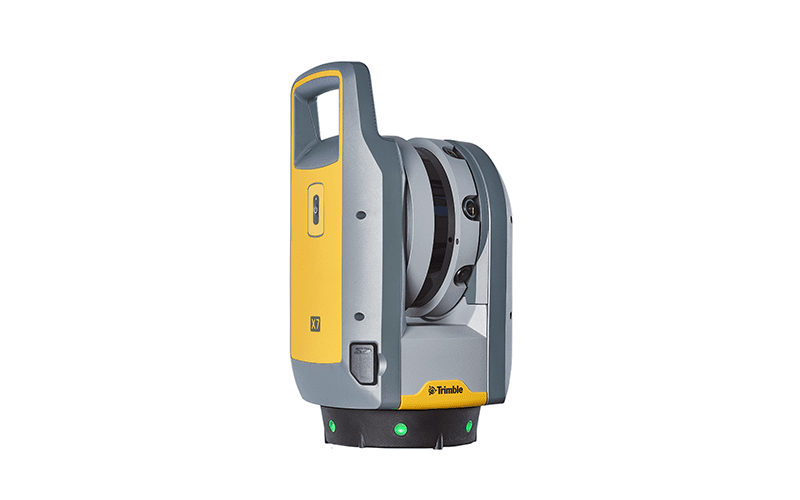
Learn more




 Prices may vary by region, over time and do not include additional products or services (taxes, shipping, accessories, training, installation, …).
Prices may vary by region, over time and do not include additional products or services (taxes, shipping, accessories, training, installation, …).